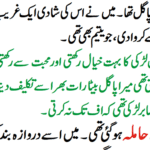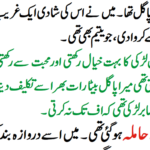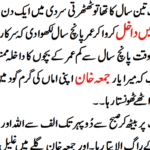For many desk workers, back pain is an all-too-familiar issue. Sitting for long periods can lead to tight muscles, poor posture, and discomfort in the lower back. Fortunately, incorporating simple yoga poses into your daily routine can help ease back pain, improve flexibility, and promote better posture. Whether you’re at home or in the office, these yoga poses are easy to do and can make a significant difference in how you feel. Let’s explore some effective yoga poses that are perfect for desk workers.
1. Cat-Cow Pose (Marjaryasana-Bitilasana)
The Cat-Cow pose is a gentle flow between two poses that helps to stretch and mobilize the spine. It relieves tension in the back and promotes flexibility.
How to do it:
- Start on your hands and knees in a tabletop position, with your wrists aligned under your shoulders and your knees under your hips.
- Inhale as you drop your belly towards the mat, lifting your chest and tailbone towards the ceiling (Cow Pose).
- Exhale as you round your back, tucking your chin to your chest and drawing your belly button towards your spine (Cat Pose).
- Repeat this flow for 5-10 breaths, moving with your breath.
2. Child’s Pose (Balasana)
Child’s Pose is a restorative pose that gently stretches the lower back, hips, and thighs. It’s perfect for relieving tension after a long day of sitting.
How to do it:
- Begin on your hands and knees in a tabletop position.
- Bring your big toes together and spread your knees wide apart.
- Sit back on your heels and extend your arms forward, lowering your chest towards the mat.
- Rest your forehead on the mat and take slow, deep breaths.
- Hold for 1-3 minutes, allowing your body to relax.
3. Seated Forward Bend (Paschimottanasana)


Seated Forward Bend is an excellent pose for stretching the spine and relieving tension in the lower back.
How to do it:
- Sit on the floor with your legs extended straight in front of you.
- Inhale and lengthen your spine, reaching your arms up overhead.
- Exhale as you hinge at the hips, reaching your hands towards your feet.
- Keep your spine long as you fold forward, bringing your chest towards your thighs.
- Hold the pose for 5-10 breaths, focusing on relaxing your back and legs.
4. Downward-Facing Dog (Adho Mukha Svanasana)
Downward-Facing Dog is a classic yoga pose that stretches the entire back, shoulders, and hamstrings. It helps to relieve tension and improve circulation.
How to do it:
- Start on your hands and knees in a tabletop position.
- Spread your fingers wide and press firmly into the mat.
- Tuck your toes under and lift your hips towards the ceiling, straightening your legs.
- Keep your hands shoulder-width apart and your feet hip-width apart.
- Press your heels towards the floor and lengthen your spine.
- Hold for 5-10 breaths, feeling the stretch along your back and legs.
5. Bridge Pose (Setu Bandhasana)
Bridge Pose strengthens the back muscles while stretching the chest, neck, and spine. It’s a great way to counteract the effects of prolonged sitting.
How to do it:
- Lie on your back with your knees bent and your feet flat on the floor, hip-width apart.
- Place your arms by your sides with your palms facing down.
- Inhale and lift your hips towards the ceiling, pressing into your feet and shoulders.
- Clasp your hands underneath your back, rolling your shoulders underneath you.
- Hold for 5-10 breaths, then slowly lower your hips back to the floor.
6. Cobra Pose (Bhujangasana)
Cobra Pose is a gentle backbend that stretches the spine and opens the chest. It helps to strengthen the lower back and improve posture.
How to do it:
- Lie face down on the mat with your legs extended and the tops of your feet resting on the floor.
- Place your hands under your shoulders, keeping your elbows close to your body.
- Inhale and slowly lift your chest off the mat, using your back muscles rather than your arms.
- Keep your elbows slightly bent and your shoulders away from your ears.
- Hold for 5-10 breaths, then gently lower your chest back to the mat.
FAQs (Frequently Asked Questions):
Q: How often should I do these yoga poses to ease back pain? A: Practicing these poses daily or a few times a week can help alleviate back pain and improve flexibility. Consistency is key.
Q: Can I do these yoga poses at my desk? A: Some poses, like Seated Forward Bend, can be adapted for a seated position. Others may require a bit more space, so consider doing them during a break or at home.
Q: Do I need any special equipment to do these yoga poses? A: A yoga mat is helpful, but not necessary. You can use a towel or a soft surface if you don’t have a mat.
Q: Are these yoga poses safe for beginners? A: Yes, these poses are beginner-friendly and can be modified as needed. Always listen to your body and avoid pushing yourself into discomfort.
Q: How long should I hold each pose? A: Holding each pose for 5-10 breaths is a good start. You can increase the duration as you become more comfortable with the poses.
Conclusion:
Back pain is a common issue for desk workers, but with these simple yoga poses, you can ease discomfort and improve your posture. Incorporating yoga into your daily routine helps to stretch tight muscles, relieve tension, and strengthen the back, leading to better overall well-being. Whether you’re at the office or at home, taking a few minutes to practice these poses can make a big difference in how you feel.







![Daily Steps or Weekly Workouts: What’s Best for Your Health? ]](https://uhealthytips.com/wp-content/uploads/2024/08/unnamed-file-150x150.png)